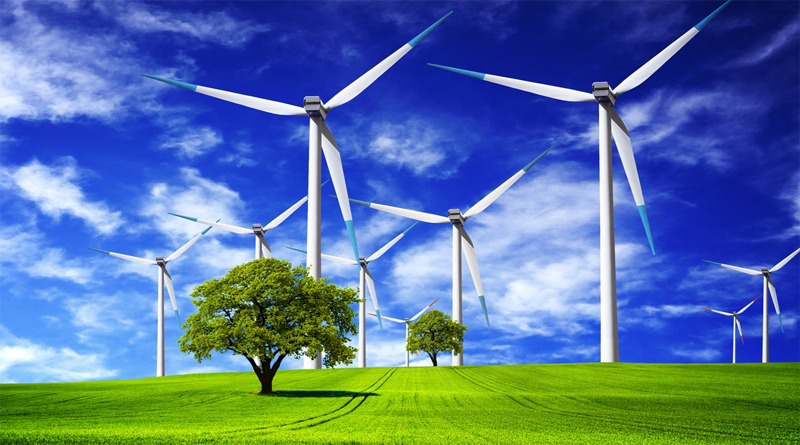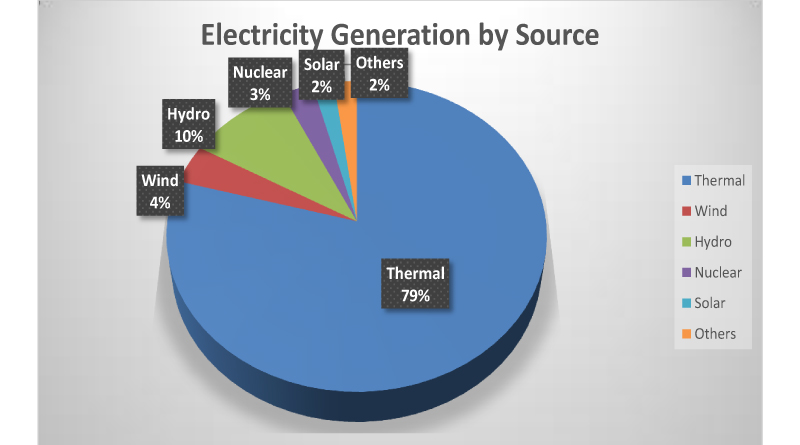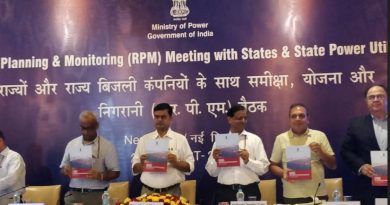In India, Renewables accounted for 20% of Energy Mix in FY 2017-18

At the end of the financial year on Mar’2018, India’s total installed power generation capacity was 345 GW of which renewables accounted for 70 GW or 20.32 percent.
The year (2017-18) saw a continued rise in additions to the country’s renewable energy capacity and accounted for one-fifth of the total capacity mix by the end of the financial year as per the data made available by the Central Electricity Authority. The Year on Year (YoY) rise of 2.8 percent from 17.5 percent to 20.32 percent was largely credited to the growth in solar. As the sector saw an increase of nearly 92% from the previous year having generated nearly 25.90 billion units in 2017-18 to the accounted 13.5 billion units in 2016-17. Which is about where the good news ends.
In 2017-18 India generated an accounted 1,337 billion units of electricity with a surplus of 108 billion units. While renewables accounted for 271 billion units of electricity in the year as Hydropower remained the number one source of alternate energy providing nearly 10 percent of total capacity mix. Wind energy accounted for 4 percent of the total energy mix and Nuclear power increased capacity to nearly 3 percent of total.

Even though solar figuratively saw the biggest YoY increase in generation capacity of all renewable sources, the 92 percent increase or 25.9 billion units it generated only accounted for 1.98% of the total energy mix. This was due to the lower capacity factor of the panels, the actual electricity generation from the sector is much lower compared to other sources and specifically fossil-fuel based plants. Another reason that hampered the true growth of the field was the limitations of acquiring land and low/no exemptions on integration costs. The Council of Energy, Environment and Water recently said that subsidies on integration costs for solar infrastructure would drastically increase the rate of increase of renewables in the total energy capacity mix.
What this also underlines is the need to balance out the headlong rush to view renewables as a panacea when the ability and capacity of the sector remain limited. With larger questions of dependability yet to be answered, its clear that options like nuclear are not going anywhere, as they should not.
The same study also expressed that the coal cess should bear the cost of subsidies provided to the renewable sector. This would mark the transition from coal to renewable energy in the most efficient and fastest way. However, going by the government’s past record on cess collections, that seems unlikely to be done anytime soon, efficiently.
Shri R. K. Singh, Hon’ble Minister of State (I/C)- Power and New & Renewable Energy recently said while addressing at an event, “Our long term social objective is that of a healthier planet and there are costs attached to attain this objective. Our intent is to design policies so that our long-term goals are met for Clean India.”
Coal i.e. thermal power accounted for a massive 80 (79.28) percent share in the total energy generation during the year, most of which was supplemented by imports, placing a huge load on the economy. The need and urgency to switch to alternate/renewable energy is underlined by sudden investment increase in the sector.
![]()




